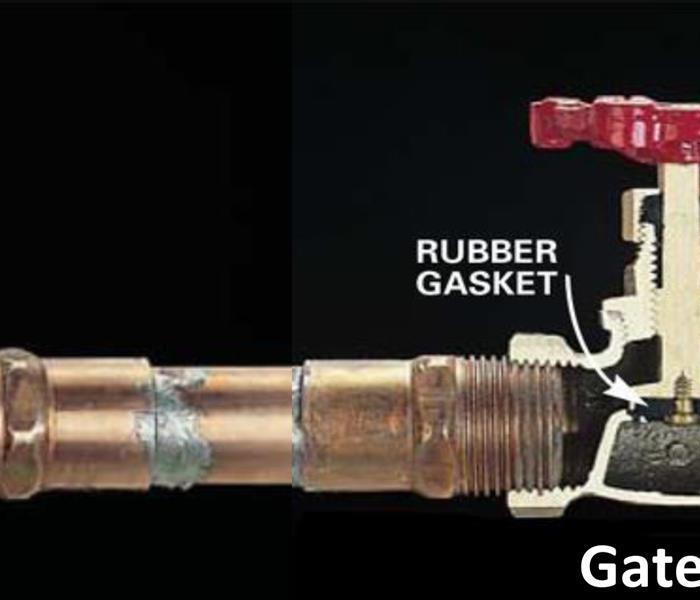Raising Temps...mean frozen pipes melting.. Be on the look out.
2/16/2016 (Permalink)
Temps are warming up.. You may have a frozen pipe and not know it. Make sure you know where your main water shut off is to mitigate damages. Find some useful tips below on what to look for.
Almost all water meters have one main shutoff valve directly before the meter and another directly after. Where the meter is located depends on the climate in your area.
In cold climates like we find in the New England area the meter and main shutoff valves are located inside, usually in a basement or other warm area to prevent freezing.
Cities and towns have their own shuts off valve for the point where the water enters your home from the main city supply that they can shut off but you can not access this. They prefer you turn your water off or on using the main valve on the house side of the meter. This valve will normally be a gate-type valve, with a round knurled handle, requiring several full clockwise rotations to turn off. In newer homes, it could be a ball valve.
In addition, most houses built today have small, localized shutoff valves called fixture supply stops installed on the supply lines leading to other utilities in within the house such as toilets, faucets, dishwashers, washing machines, and water heaters. These tend to each have their own individual shut off valve, usually a small round or oval handle that you turn clockwise two to four full turns to shut off the flow of water.
Depending on the age of the house this may only be found on a toilet if they even have that. If there are no individual item shut offs you must always shut off the main supply when doing any work what so ever. With supply valves, you can turn off the water to a single fixture while fixing or replacing that faucet.
If your plumbing system lacks supply stops, we suggest that if you ever have to install them when you shut off the main valve to repair a sink, toilet or appliance. Eventually you'll have supply stops at every fixture, remember, fixture supply stops must be easily accessible; you can't drywall or plaster over them without installing an access panel to reach them.
Supply stop problems
There are problems even with the individual fixture supply stops. Due tot Be aware of these common problems with fixture supply stops: Many water supply valves drip when turned off and then back on again after an extended period of disuse.
To fix a drippy supply valve, try gently tightening the packing nut with a wrench, or opening and shutting the valve several times until the drip stops. If a supply valve simply won't stop leaking, your only option is to replace it—which will require shutting off the main valve. In cold climates, most people remember to close the supply shutoffs for their outdoor spigots to prevent freezing, but many then forget to open the outside spigot to drain the remaining water.
If the water trapped between the spigot and supply shutoff valve freezes, it can burst that section of pipe. Since there's no water flowing through this short damaged section of pipe, there are no obvious leaks or sign of damage—yet. But when you turn the supply valve back on in the spring and pressure returns to that pipe, the burst section of pipe will leak like crazy—and often go unnoticed for hours or days. One plumber told me he's made dozens of repairs dealing with this mistake.
Finally, many icemakers and furnace humidifiers are fed by small flexible copper tubes that are connected to larger copper pipes via a very small T-handled device called a saddle valve These valves essentially bite into the larger pipe to feed the smaller one. Leaky saddle valves are a major cause of residential water damage and are no longer code-compliant in many areas. If you have saddle valves, replace them with standard supply stops.




 24/7 Emergency Service
24/7 Emergency Service
